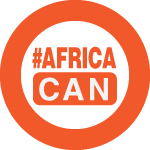The Republic of South Sudan became the world’s youngest nation and Africa’s 54th country on July 9, 2011. Since then, the country has faced significant challenges, including outbreaks of civil war (2013, 2016), subnational violence, and political contestation. These factors, along with weak management of public resources, have hindered development and intensified humanitarian needs.
The Revitalized Agreement on the Resolution of the Conflict in the Republic of South Sudan (R-ARCSS) signed in Sept. 2018 and the formation of a Transitional Government of National Unity in Feb. 2020 have contributed to stability. The transitional period was extended to Feb. 2027, giving more time for the government to implement provisions in the R-ARCSS and prepare the country for elections. Despite positive steps, the peace process faces challenges, such as unification of armed forces and drafting of a permanent constitution.
South Sudan remains in a serious humanitarian crisis due to conflict and insecurity, high cost of living, intercommunal violence, and food insecurity which have severely affected people’s livelihoods and hindered access to essential services.
The ongoing inflow of returnees and refugees from Sudan is exasperating this situation. 7.7 million (57% of the population) are projected to face crisis-level or more severe acute food insecurity from April to July 2025. 85% of returnees are also facing this. Malnutrition rates remain alarmingly high among children and women - more than 2.1 million people at risk of acute malnutrition by the end of 2025. As of Oct. 2025, estimates show South Sudan is hosting more than 900,000 refugees and asylum-seekers from Sudan and that 337,000 more refugees, will arrive in 2025.
It is critical to implement the peace agreement, strengthen service delivery and institutions, improve governance and economic management, and address fragility to build resilience against shocks and lay the foundation for diversified, inclusive growth.
ECONOMY
The economy contracted by an estimated 23.8% in FY25, driven by a year-long shutdown of the Dar Blend pipeline (February 2024–2025), which carries 63% of South Sudan’s oil through conflict-affected Sudan. Monetized fiscal deficits triggered sharp currency depreciation and hyperinflation, while extreme poverty surged to nearly 91% in 2025, pushing an additional 3 million people into poverty.
The outlook hinges on restoring political and macroeconomic stability, strengthening governance, and managing natural resources transparently. In the near term, the resumption of Dar Blend oil production will deliver a temporary boost to GDP growth, though risks remain from conflict-related disruptions in Sudan. Agricultural output is also expected to rebound from flood-related losses, supported by expanded land use. Sustained growth, however, will require attracting investment—particularly FDI—into both oil and non-oil sectors. Investor confidence is undermined by the exit of Petronas, ongoing legal disputes in the oil industry, and frequent leadership changes that heighten policy uncertainty.
Risks are tilted to the downside. Incomplete implementation of the 2018 peace agreement could reignite conflict, further weakening governance and macroeconomic stability. Oil revenues may underperform if global demand slows or if Sudan’s conflict disrupts flows. Climate shocks, especially flooding, pose additional risks to agriculture and food security. These challenges underscore the urgent need for governance and structural reforms to bolster resilience and lay the foundations for sustainable, inclusive development.
Last Updated: Oct 06, 2025







